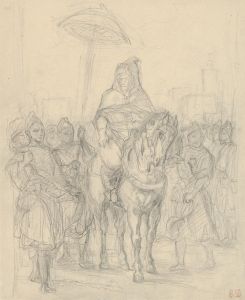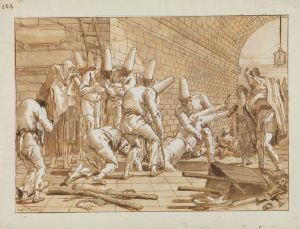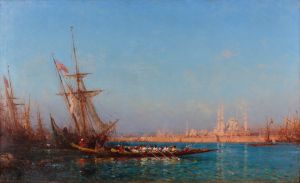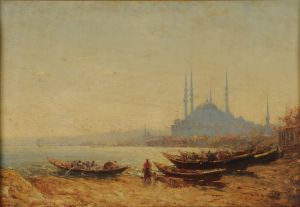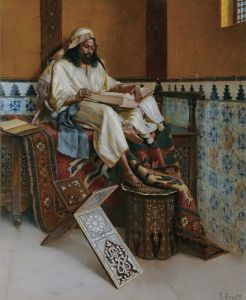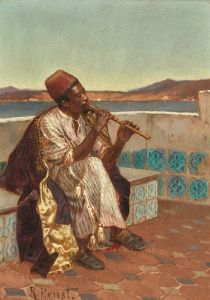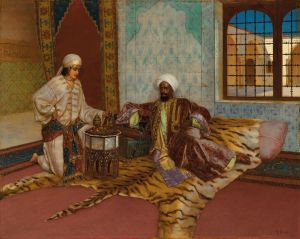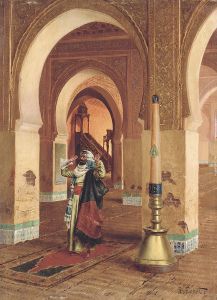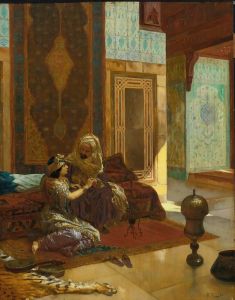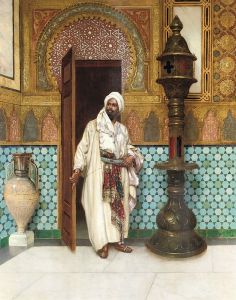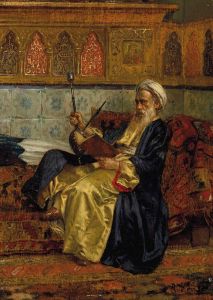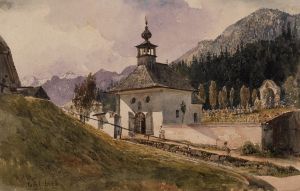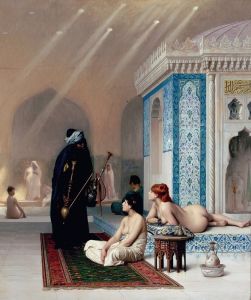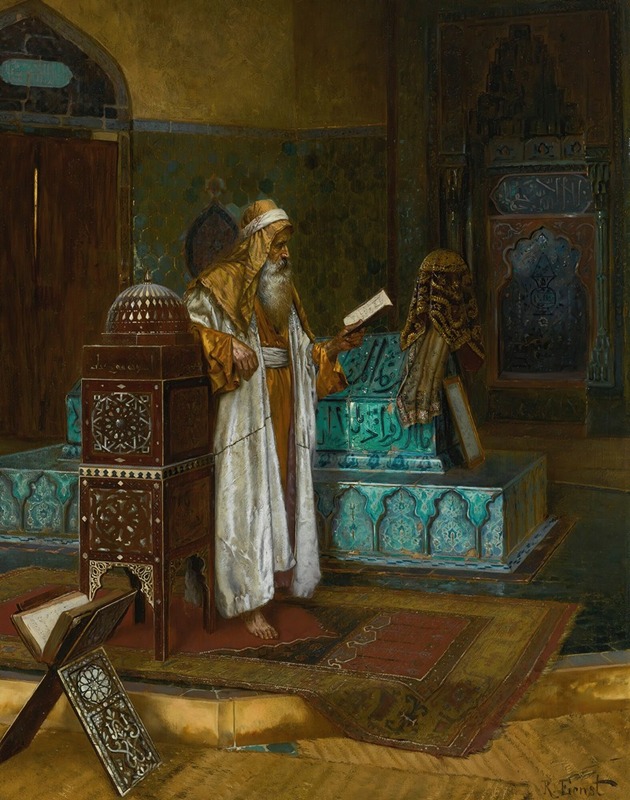
The Tomb Of Sultan Mehmet I
A hand-painted replica of Rudolf Ernst’s masterpiece The Tomb Of Sultan Mehmet I, meticulously crafted by professional artists to capture the true essence of the original. Each piece is created with museum-quality canvas and rare mineral pigments, carefully painted by experienced artists with delicate brushstrokes and rich, layered colors to perfectly recreate the texture of the original artwork. Unlike machine-printed reproductions, this hand-painted version brings the painting to life, infused with the artist’s emotions and skill in every stroke. Whether for personal collection or home decoration, it instantly elevates the artistic atmosphere of any space.
Rudolf Ernst was an Austrian painter known for his Orientalist works, which often depicted scenes inspired by the cultures and landscapes of the Middle East and North Africa. Born in Vienna in 1854, Ernst was part of a movement of European artists who were fascinated by the exoticism and allure of the Orient, a term used at the time to describe the regions of the Eastern Mediterranean, North Africa, and parts of Asia.
"The Tomb of Sultan Mehmet I" is one of Ernst's works that reflects his interest in capturing the architectural and cultural elements of the Islamic world. Sultan Mehmet I, also known as Mehmed I, was an Ottoman sultan who reigned from 1413 to 1421. He is known for restoring the Ottoman Empire after a period of civil strife known as the Ottoman Interregnum. His tomb, located in Bursa, Turkey, is part of a larger complex that includes a mosque and other historical structures.
Ernst's painting likely depicts the interior or exterior of this tomb, capturing the intricate details and the serene atmosphere associated with such sacred spaces. His works are characterized by meticulous attention to detail, vibrant colors, and a romanticized portrayal of the Orient, which was a common approach among Orientalist artists of the 19th century.
Ernst's artistic style was influenced by his academic training and his travels. He studied at the Academy of Fine Arts in Vienna and later moved to Paris, where he became part of the vibrant art scene. His travels to Spain, Morocco, and Turkey provided him with firsthand experiences of the cultures he depicted in his paintings. These journeys allowed him to gather a wealth of visual material, which he used to create compositions that were both imaginative and rooted in reality.
In "The Tomb of Sultan Mehmet I," Ernst would have employed his skills in rendering architectural details and his understanding of light and shadow to create a sense of depth and realism. His use of color would enhance the mood of the scene, inviting viewers to immerse themselves in the tranquility and beauty of the setting.
Ernst's work is part of a broader tradition of Orientalism in art, which has been both celebrated for its aesthetic achievements and critiqued for its portrayal of Eastern cultures through a Western lens. Orientalist paintings often reflect the artists' fascination with the exotic and the unfamiliar, but they can also perpetuate stereotypes and misconceptions about the cultures they depict.
Today, Ernst's paintings, including "The Tomb of Sultan Mehmet I," are appreciated for their technical skill and their contribution to the genre of Orientalism. They offer a glimpse into the 19th-century European perspective on the East and continue to be studied for their artistic and cultural significance.





